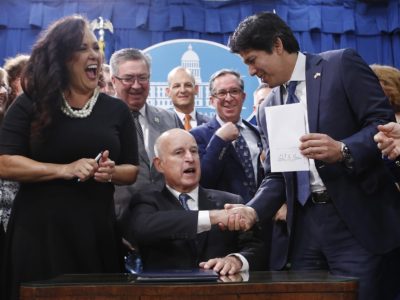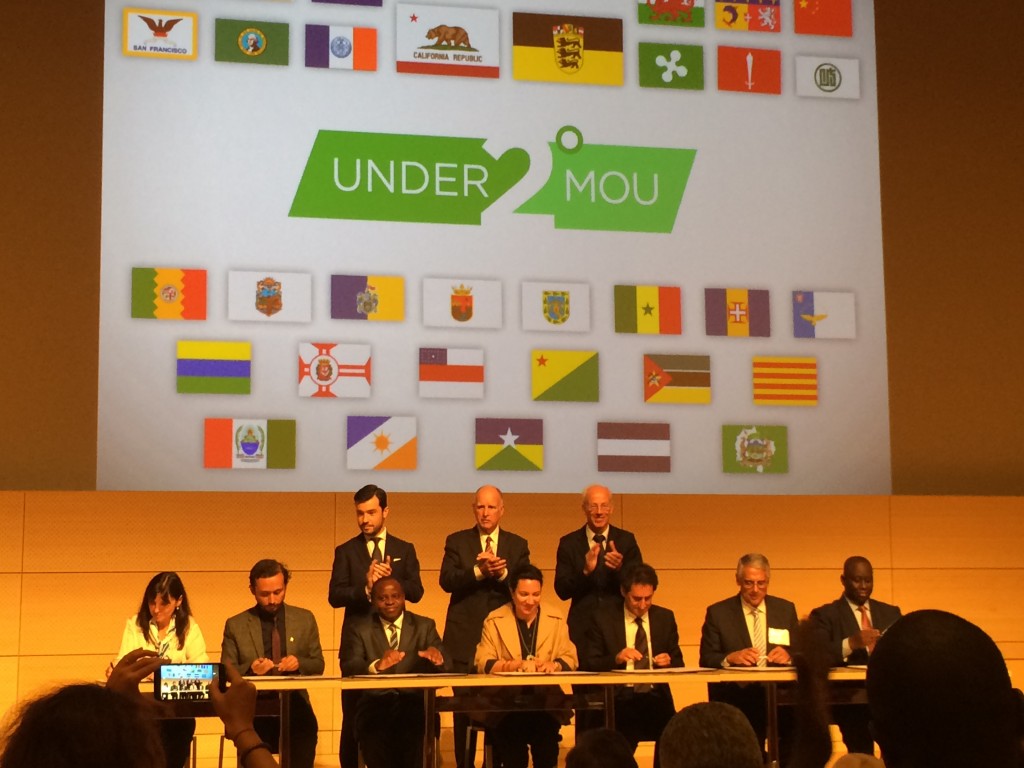 In a surprise move ahead of this week’s Global Climate Action Summit in San Francisco, Governor Brown issued an executive order directing state agencies to achieve statewide carbon neutrality by 2045, with negative emissions thereafter.
In a surprise move ahead of this week’s Global Climate Action Summit in San Francisco, Governor Brown issued an executive order directing state agencies to achieve statewide carbon neutrality by 2045, with negative emissions thereafter.
Previous gubernatorial executive orders on long-term emissions goals focused on reducing emissions to 80 percent below 1990 levels by 2050. So the new 2045 target represents a significant acceleration, which will likely require massive deployment of “negative emission technologies” that sequester carbon at a scale most policy makers have not yet contemplated, as well as purchased offsets such as forest projects.
Significantly, the order does not require California to be zero-emission by 2045, which is basically impossible without yet-to-be-deployed carbon capture and storage technologies. So instead the state will continue its path-breaking greenhouse gas reduction efforts, and anything left over will have to be offset.
On one hand, executive orders do not carry the force of legislation and can be overturned by subsequent governors with the stroke of a pen. But on the other hand, executive orders on greenhouse gas emissions in California have tended to precede legislation that codifies them. So Governor Brown’s move today lays down a strong marker for the legislature to follow.
The order also represents a reaction to the growing urgency of climate change, as effects are felt worldwide in ways that are exceeding many scientific projections. And it also signifies optimism that the business community and international leaders (if not federal leaders here in the United States) can muster the investment and innovation necessary to deploy the needed technologies.

Governor Brown witnesses subnational leaders from around the globe signing the “Under 2 MOU” Thursday in New York.
Last night subnational leaders from around the globe gathered in New York City to sign the California-led “Under 2 MOU” pledge. The effort involves getting big cities and states within nations to commit to limiting warming to under two degrees centigrade by 2100 (hence the “under 2” name).
Governor Brown was on hand to witness the signing, and Berkeley Law helped support the event, which was I was there. More from the Washington Post on it:
The additions Thursday brought to nearly 40 the number of major cities and provinces to sign the extraordinarily ambitious — though nonbinding — pact. Signers commit to either cutting pollution to 80 to 95 percent below 1990 levels, or attaining a per capita emissions goal of two metric tons of carbon emissions by 2050. The current per capita average of U.S. citizens is about 18 tons.
“We’re just getting warmed up,” said California Gov. Jerry Brown (D), who helped launch the movement. “And I promise you, no opposition . . . will stop California from reaching the sustainable goals we commit to tonight.”
Brown’s office said the signers — who include representatives from New York and Mexico City — collectively represent 313 million people and more than $8.7 trillion in gross domestic product. If they were a single country, it “would be the third largest economy in the world, behind only China and the United States,” the governor’s office said in a statement.
In the remarks leading up to the event, Glen Murray, Ontario’s environment minister, actually choked up describing the impacts of climate change on some of the northern provinces in Canada. As he said, many of those areas are already at 2 degrees warmer and will likely rise to seven degrees, effectively destroying much of the way of life there.
His remarks, and the fiery comments of Governor Brown, reminded the audience of the stakes and called them to action. If the effort is successful, it will not only lead to greater cooperation among these entities in reducing greenhouse gas emissions, but hopefully force a more aggressive international treaty in Paris this December.


